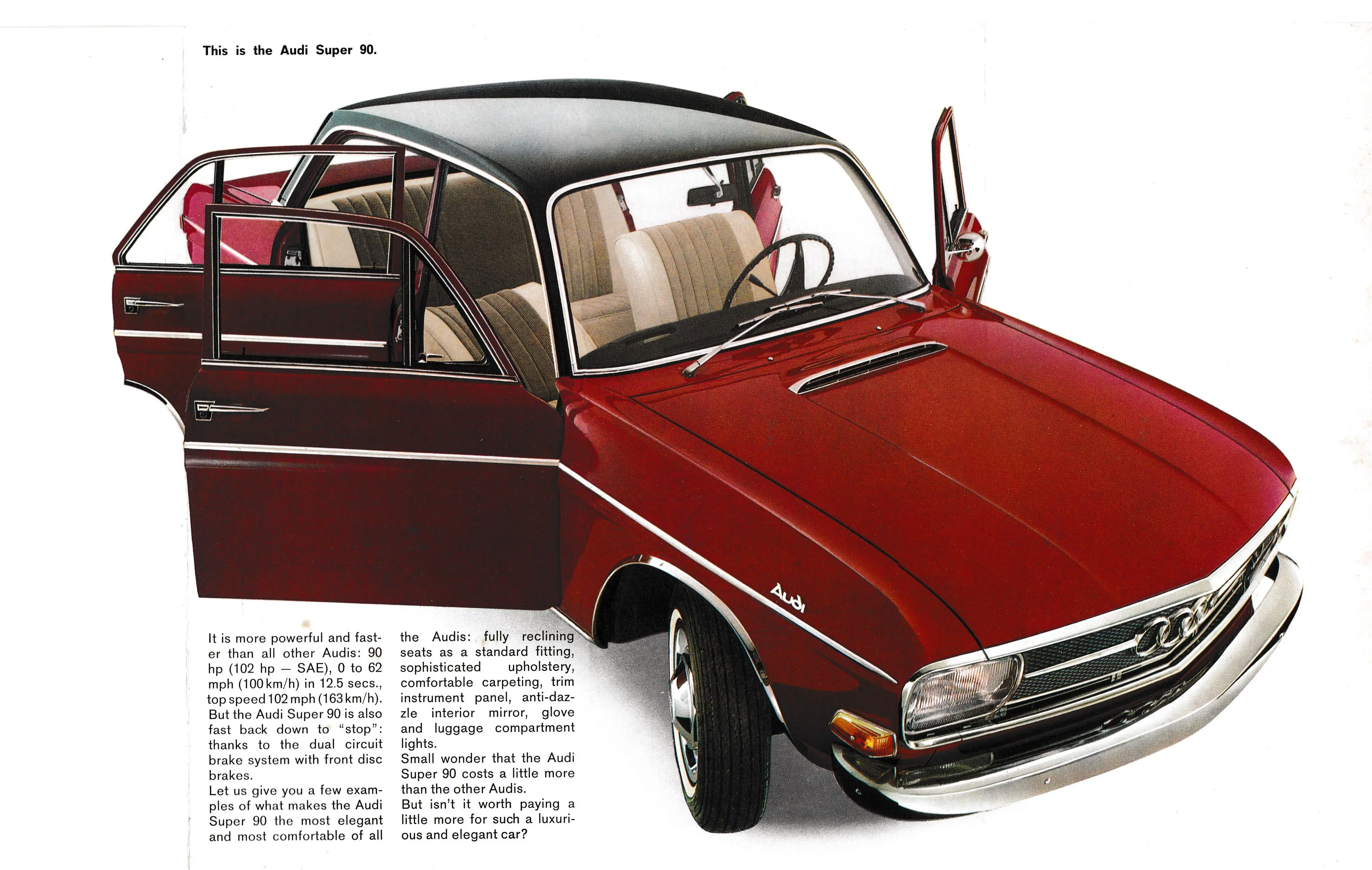THE AUDI SUPER 90 – A CELEBRATION
07 July 2022
Fifty-five years ago, UK sales commenced of an upmarket FWD medium-sized saloon from Germany. Its appearance may have been low-key, and the steering column gear lever seemed decidedly unsporting. Still, the advertisement promised an engine developed by Mercedes-Benz, a transmission with synchromesh developed by Porsche the synchromesh and suspension developed by Volkswagen. The name of this intriguing vehicle was the Auto Union Audi Super 90, and surely it was worth calling ISLeworth 2151 to arrange a test drive?
Audi was one of the four marques of the Auto Union, the others being Horch, Wanderer and DKW – hence the four-ringed badge. After the Second World War, the company revived only the last-named on a range of small 2-stroke saloons, but Daimler-Benz’s purchase of AU in 1958 meant the financial backing for a new line-up. The resulting DKW F102 debuted in March 1964, but sales remained slow, despite features like inboard front disc brakes. By that time, German motorists favoured 4-stroke engines, and on 1st January 1965, Volkswagen AG acquired a majority shareholding in Auto Union. Their MD Dr. Heinrich Nordoff, initially banned developing any new AU models, but the F103, a 1.7-litre version of the F102, was only months from launch.

VW ultimately approved the new model and decided it should be sold under the Audi badge, which had been dormant since 1939. The Daily Telegraph of 10th September 1965 reported that two and four-door versions would be available, that prototypes would be displayed at the London Motor Show and that RHD production would begin in December. The article also stated that British market versions were to be known as the ‘Auto Union 1700’, although the sales copy tended to focus on the Audi name. Mercedes-Benz GB marketed the F103 via its dealership network.
The Super 90, powered by a 1,761cc engine, followed in 1966 and was immediately recognisable via its chrome-plated wheel arches, ‘Wilton’ carpeting and reclining front seats. In its homeland, the latest Audi was a serious rival to the BMW 1600-2. In the UK, the 90 competed with the Rover P6 and the Triumph 2000. Import duties meant a price inflated to £1,194 0s. 3d, but the British motoring press was generally positive. While complaining the Audi lacked glamour, Motor found it “a car of outstanding performance for the engine size and price”, and Motor Sport’s editor concluded, “With better handling and a floor gear-lever I would be quite partial to this unusual German car”.
By the time the B1-series 80 replaced the F103 family in 1972, the Auto Union family name was already becoming forgotten. The Super 90 not only anticipated the 100 C1 of 1968 but also established the Audi name. In 1967 the general manager of the brand’s UK operations told the press, “We are looking forward to winning a place in the executive car market in Britain”. How right he was…
